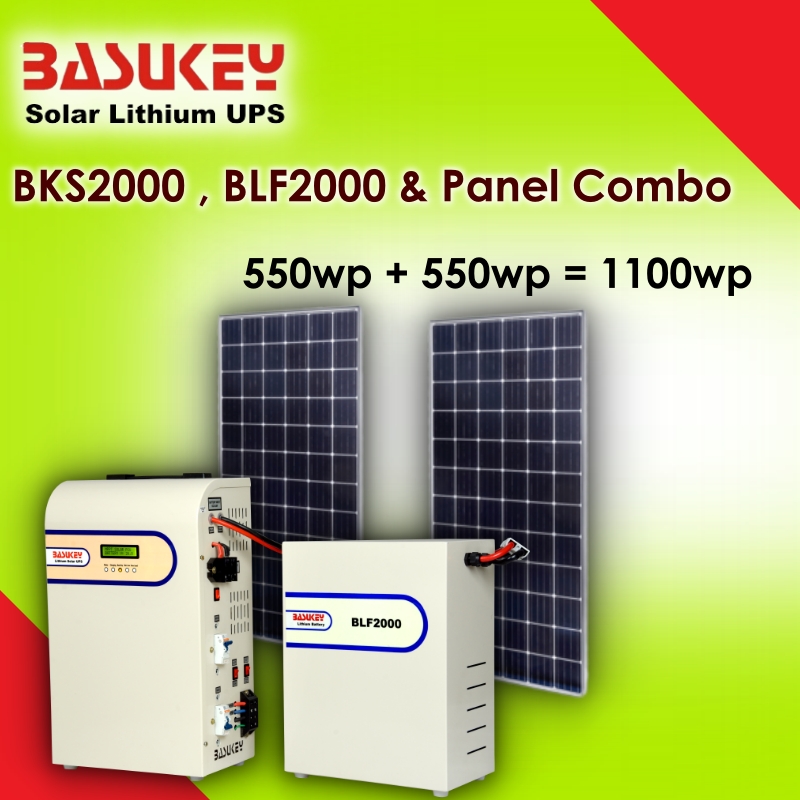How Solar Inverter Battery Storage Works: A Simple Guide
Solar energy is becoming an increasingly popular way to power homes and businesses, providing a sustainable and cost-effective alternative to grid electricity. However, solar panels alone cannot provide power when the sun isn’t shining—this is where solar inverter battery storage comes in. A solar inverter battery storage system allows you to store excess solar energy during the day and use it when needed, ensuring continuous power supply even at night or during outages. In this guide, we’ll explain how it works in a simple and easy-to-understand way.
1. Understanding the Key Components
A solar inverter battery storage system consists of three main components:
a) Solar Panels
- These absorb sunlight and convert it into DC (direct current) electricity.
- The amount of power generated depends on the size and efficiency of the solar panels.
b) Solar Inverter
- Solar panels produce DC electricity, but most home appliances use AC (alternating current).
- The solar inverter converts DC into AC, making the energy usable for your home or business.
c) Battery Storage
- If your solar panels produce more electricity than you use, the excess energy is stored in a battery for later use.
- When sunlight is not available (e.g., at night or during cloudy weather), the system draws power from the battery instead of relying on the grid.

2. How Solar Inverter Battery Storage Works
Step 1: Solar Panels Generate Electricity
During daylight hours, solar panels capture sunlight and convert it into DC electricity.
Step 2: Power is Used or Stored
The generated electricity follows one of three paths:
- Powering Your Home: If your appliances are running, electricity flows directly to them via the inverter.
- Storing Excess Energy: If more power is produced than consumed, the extra energy is stored in the battery for later use.
- Exporting to the Grid: If your battery is fully charged and your home doesn’t need power, excess energy is sent back to the grid (if your system is connected).
Step 3: Battery Discharges When Needed
- When solar production drops (like at night or during rainy days), the battery releases stored energy to keep your home powered.
- If the battery runs out of charge, your home may draw power from the grid (unless you have an off-grid system).
Step 4: Battery Recharges the Next Day
- The next morning, the process repeats, ensuring a continuous cycle of energy generation and storage.
3. Types of Solar Inverter Battery Storage Systems
There are different types of solar + battery storage setups, depending on how you want to use the stored energy.
a) Grid-Tied with Battery Backup
- The system remains connected to the main power grid but includes a battery backup.
- When solar energy is available, the system uses or stores it, but if the battery is depleted, power is drawn from the grid.
- Best for: Homes looking to reduce electricity bills while still having access to grid power.
b) Off-Grid Solar Systems
- This system is not connected to the grid and relies entirely on solar panels and battery storage.
- The battery must be large enough to store enough power to last through periods of low sunlight.
- Best for: Remote areas or homes that want complete energy independence.
c) Hybrid Solar Systems
- A combination of grid-tied and off-grid features.
- You can use solar energy, store excess in a battery, and sell surplus power back to the grid.
- Best for: Homes wanting maximum flexibility and energy security.
4. Why Lithium Batteries Are the Best Choice for Solar Storage
Not all batteries are the same—when it comes to solar storage, lithium-ion batteries are the superior choice compared to lead-acid batteries.
Advantages of Lithium-Ion Batteries (Like Basukey Lithium UPS)
a) Longer Lifespan: Lasts 10-15 years, while lead-acid batteries last only 3-5 years.
b) Higher Efficiency: Can store and discharge more energy without losses.
c) Faster Charging: Charges faster than lead-acid batteries, ensuring maximum energy use.
d) Compact & Lightweight: Takes up less space and is easier to install.
e) Eco-Friendly: Less harmful to the environment and requires less maintenance.
Basukey Lithium UPS: The Smart Choice for Solar Storage
Basukey Lithium UPS systems are designed for seamless integration with solar power setups, providing:
- Reliable backup power for homes and businesses.
- Intelligent energy management for maximum efficiency.
- Scalable battery capacity, allowing you to expand your system as needed.
5. Benefits of Using Solar Inverter Battery Storage
I.Energy Independence – Reduce reliance on the grid and power your home with solar energy.
II. Lower Electricity Bills – Store and use free solar energy instead of buying electricity.
III. Backup Power During Outages – Keep your home running even when the grid fails.
IV. Sustainable & Eco-Friendly – Reduce your carbon footprint by using clean energy.
V. Higher Solar Efficiency – Avoid wasting excess solar energy by storing it for later use.
Final Thoughts: Is Solar Inverter Battery Storage Right for You?
If you want to maximize the benefits of solar energy, solar inverter battery storage is a game-changer. Whether you’re looking for lower energy bills, backup power, or greater energy independence, investing in a reliable battery storage system like Basukey Lithium UPS ensures that you get the most out of your solar panels. With advanced lithium-ion technology, faster charging, and longer battery life, Basukey Lithium UPS provides a smart, efficient, and future-proof solution for solar energy storage. Want to make your home outage-proof and energy-efficient? Consider upgrading to a Basukey Lithium UPS system today!
